Alpana Singh is a star of Chicago’s fine dining scene, with a string of accomplishments including a TV show, an upcoming book and the distinction of being one of the youngest master sommeliers in the world, but at the moment, she’s perhaps most excited about her new condo in Rogers Park.
The star of the WTTW program Check Please! has lived in the South Loop and in Wrigleyville, but when she and fiancé, writer Charles Blackstone, saw what $379,000 could buy in East Rogers Park, they knew it was time for a change.
They found a neighborhood on the lake with a lively arts scene, and café culture – and a new two-bedroom condo with granite counters and a steam shower that they could afford. A similar home would cost significantly more in Lake View or Lincoln Park.
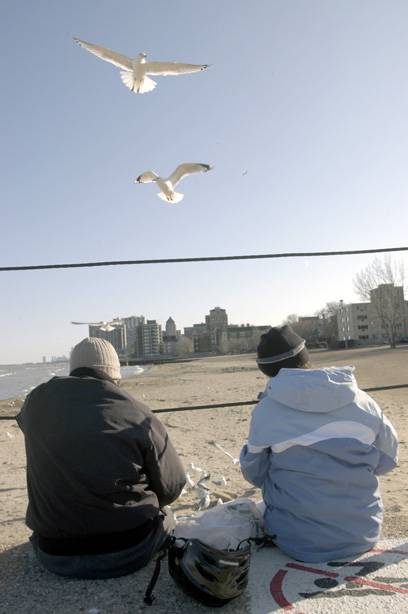
The couple is embracing their new neighborhood with gusto. In early 2006, Singh was planning to take part in a Rotary Club food and wine festival at Loyola University to raise funds for neighborhood schools. Blackstone, a novelist, was busy planning a reading at the local Heartland Café, 7000 N.Glenwood Ave.
Singh and Blackstone are part of the changing face of East Rogers Park, Chicago’s northernmost neighborhood, bounded roughly by the lake on the east, Devon Avenue on the south, Ridge Boulevard on the west and Howard Street on the north (except for a section on the eastern edge that juts north of Howard). Rogers Park is bordered on the north by suburban Evanston.
The dense neighborhood has long been one of the more affordable on the north lakefront. It offers a long stretch of un-congested beaches, well-constructed vintage housing stock, tree-lined avenues and an array of Chicago Transit Authority train and bus options. Neighborhood residents pride themselves on their diversity. More than 80 languages are spoken in East Rogers Park, and Rogers Parkers come from a wide range of countries and backgrounds.
West Rogers Park has more single-family homes and higher-income residents, but East Rogers Park historically has been a port of entry. For decades, a low rate of owner occupancy, a lack of commercial development (restaurants and retail are still sparse) and problems with crime have kept prices lower in East Rogers Park than in many North Side neighborhoods. But during the last 15 years, the rate of homeownership in the community has risen as vintage apartments steadily have been converted to comparatively affordable condominiums.
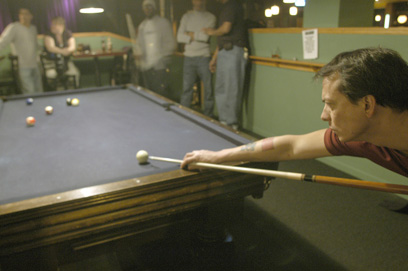
Chicago’s residential real estate boom and skyrocketing prices sent growing numbers of young homebuyers priced out of other lakefront neighborhoods into East Rogers Park in the ’90s and beyond, pushing prices upward. In 2005, the median price for a condo or townhome in Rogers Park was $194,900, an increase of 50 percent from 2000, according to the Chicago Association of Realtors. That price, however, was still well below the citywide median for 2005, $285,000.
Condo activity
The pace of condo development can be measured by sales volume over the last decade. In 1995, 193 condos and townhouses sold in Rogers Park, according to CAR statistics. In 2005, 1,121 units sold, a nearly six-fold increase.
Many of the developments are conversions of existing multi-family brick apartment buildings. Developers like Castlebar Enterprises and Stage Development Company, which is affiliated with Camelot Realty, are converting small apartment buildings throughout the neighborhood.
But larger developments also have started to spring up. SMB Development’s Lakeview Pointe is a prominent project at 7750 N. Sheridan Road, where Sheridan bends just before Evanston. The development includes townhouses and condos with views of the lake from across the street.
Lakeview Pointe is an unusual project for East Rogers Park, where development is still dominated by condo conversions, such as the 50-unit Eastwood Manor Condominiums, 7527 N. Damen Ave., by Mirro Development. Units at this project have one to three bedrooms and are priced from the $130s to the $200s.
The neighborhood is sprinkled with conversions like Eastwood Manor, in buildings with three to 50 units, and it’s hard to go more than a couple of blocks without seeing signs for new projects. Loft / adaptive reuse developments such as The Kopley Group’s conversion of an office building at 1791 W. Howard St. into 37 condos, and developer Bill Markle’s 43-unit North Beach Lofts, 1225 W. Morse Ave., also are popping up in what appears to be a new trend for Rogers Park.
The “DINKS” arrive
Rudy Lubov, principal of Gale Elementary Community Academy School, only has to look at enrollment numbers to see evidence of the changes underway in the neighborhood. During the last five years, the school has had about 250 fewer students, Lubov says.
She attributes lower enrollment to the fact that low-income families are being squeezed out as affordable housing is replaced with pricier condominiums. The new condo buyers are often young married professionals without children, Lubov says, and those leaving the area often have several young children.
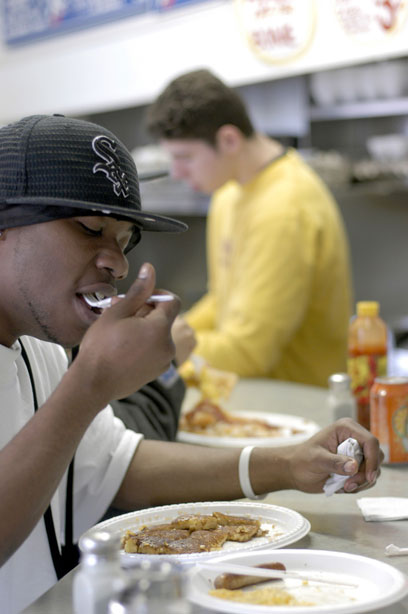
“What we are seeing here now in Rogers Park is DINKs,” says Lubov, using the acronym for “dual-income, no kids.” “We joke that we are in the dog stage now,” she adds, noting that many young couples choose to have a dog before deciding to start a family.
Priced out
Some lower-income residents have left the neighborhood, but others are trying to tough it out. That’s not easy, since apartment rents have surged alongside condo prices, according to Stuart Iseminger, director of social services at Howard Area Community Center. The center is a non-profit that provides housing, food, education and employment outreach services to 5,000 low-income clients annually in Rogers Park.
Most of Iseminger’s clients earn less than $1,000 a month. In 2002, the average monthly rent in Rogers Park was $650, but during the last two years it has risen to $850 to $900, according to Iseminger, who says poorer families are “doubling up” to share apartments. Ald. Joe Moore (49th) has required developers of 10 or more units to include an affordable housing component, but it’s hard to keep pace with the needs of low income-residents. In 2004, the center’s food pantry assisted 90 people a month, but by early 2006 it was helping about 190 people a month.
Shopping for retailers
The boom in condo conversions and rising rents have not translated into much-needed commercial development. Newcomers to Rogers Park will find the same lack of retail neighborhood residents have lived with for years. Rogers Parkers make 60 percent of their household purchases – for everything from food and entertainment to clothing and education – outside of the neighborhood, according to DevCorp North, a community development corporation.
A DevCorp study now underway is documenting the problem, detailing residents’ desire for more restaurants, cafes, bakeries and clothing stores. “The conventional wisdom is that commercial development follows residential by about 10 years,” says Kimberly Bares, DevCorp’s executive director. “We would like to close that gap by as much as possible.”
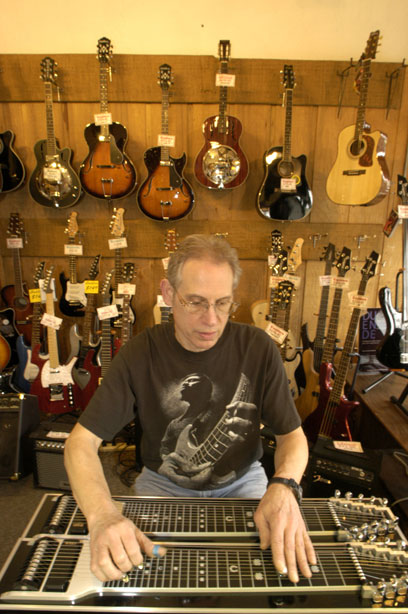
To that end, DevCorp has launched a “small business attraction campaign,” holding seminars to alert retailers to the neighborhood’s economic potential and assist them in starting up. The city has pitched in with new streetscaping on Devon Avenue and plans more on Morse and Glenwood. But despite the new community signs and planter boxes, vacant storefronts and marginal businesses remain common on major streets like Devon Avenue.
Neighborhood boosters would like to see Morse Avenue transform into a lively restaurant strip, building on the presence of a couple of successful businesses, including the restaurant and bar Morseland, 1218 W. Morse Ave. Several high profile retailers have expressed interest in setting up shop on Morse Avenue, but the owners of the buildings are reluctant to sell, Bares says, adding that DevCorp is in talks to try to find a solution.
Arts on Glenwood
Change has been slow to arrive on Rogers Park’s main streets, but there are some promising signs. During the last few years, a thriving arts community has evolved on the stretch of Glenwood Avenue just north and south of Morse Avenue. The street is home to Lifeline Theatre, 6910 N. Glenwood Ave., and the studios of about 10 artists, who now stage an annual Glenwood Street Festival.
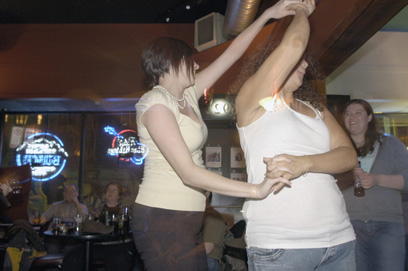
No one has had a bigger impact on this stretch of Glenwood, in the heart of Rogers Park, than Michael James, co-owner of The Heartland Café. The Heartland is a Rogers Park institution and for many, the heart of the neighborhood. Part restaurant, part general store, part bar, part music venue and all gathering place for lefties, intellectuals and revolutionaries, The Heartland has stuck with the neighborhood for nearly 30 years through dark days of high crime and gang activity.
James has expanded his complex to include The Red Line Tap, which hosts live music at 7006 N. Glenwood Ave, and The Heartland Café Studio Theater, 7016 N. Glenwood Ave., which small theater companies and performers rent for shows. James also has thoroughly renovated and expanded The No Exit Café, which sits across the street from the Heartland, at 6970 N. Glenwood Ave. The No Exit had a series of critically acclaimed shows ranging from musical revues to improv since it reopened.

The improvements are notable, but pedestrians are still intimidated by Glenwood, which sees its share of crime and drug deals. It sits under the shadow of the el and remains a favorite spot for loitering young men.
Rejuvenating Jarvis
Jarvis Avenue has a similar feel at first glance. On a snowy February night, the street appears desolate. An el train snakes around the bend at the el stop, throwing light onto a cavernous coin-laundry. The el station reeks of urine mixed with hospital-strength antiseptic and litter is strewn about.
But down at street level, it’s a different story. Between the summer of 2005 and February 2006, eight new businesses opened on the 1400 and 1500 blocks of West Jarvis Avenue, and the 7300 block of North Greenview Avenue. Another five businesses are slated to open nearby in spring 2006, according to DevCorp.
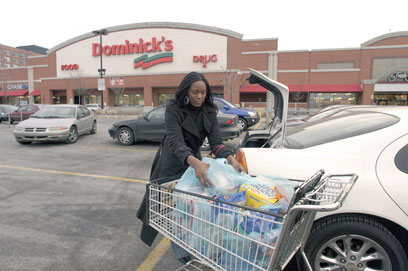
New businesses on Jarvis include Roger’s Bark, 1447 W. Jarvis Ave.; Lumbar Lounge, a massage and spa studio, at 1505 W. Jarvis Ave.; Under the Table Books, 1443 W. Jarvis; and Middle Eastern eatery Luzzat Restaurant, 1505 W. Jarvis.
Locals Lori Alderete and Phaedra Divras are scheduled to open Gruppo Di Amici, a wood-burning pizza restaurant in 2006, and CDW Grocery will open at 1506 W. Jarvis. In spring, The Dagel and Beli Shop, a deli-sandwich store that specializes in “bagels and spoonerisms,” will open at 7406 N. Greenview Ave.

“People who live here know that the community is ready for new businesses and they aren’t waiting for other people to realize it,” Bares says. “They’re jumping in and doing it themselves.”
Rogers Park resident Dan Sullivan has been instrumental in much of the revitalization of Jarvis Avenue. Sullivan plans to open Charmers Café in the building that once housed the popular gay bar Charmers, 1500 W. Jarvis Ave. A new Irish pub Poitin Stil (Gaelic for “moonshine” and pronounced “poo-cheen still”) already is in the building. The pub opened in late 2005 and its broad selection of local and imported beers, pool table and live music on weekends are drawing a faithful crowd of twenty- to thirty-somethings clearly happy about another local option for a night out.
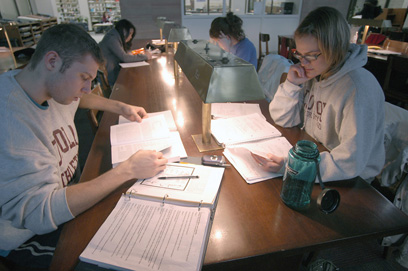
On a Wednesday night at Poitin Stil, 15 to 20 people of diverse ages and backgrounds are hanging out at the bar. Michael, a Rogers Park resident, says that a growing number of gay men seem to have migrated north to Rogers Park from Boys Town in search of affordable housing. Last year, Michael and his partner bought a vintage townhome priced in the $250s two blocks from the lake.
“I like that we have tree-lined streets,” he says. “I don’t feel like I’m in the city all the time.”
Howard Street revisited
The stretch of Howard Street between the el station and the lake has long been sketchy.
Drug dealers are fixtures, locals say, but business leaders have banded together to hire security guards and install cameras to curb illegal activity. Police point to a number of high-profile arrests of drug dealers in late 2005 that they say made a significant dent in the problem.
“Am I skeptical? Absolutely,” says musician Eric Urquiza, of plans to clean up Howard Street. “It’s very seedy. I’ve lived here many years and seen it start to boom, then fall back.”
Others disagree, arguing that residential development will stabilize the neighborhood, making it cleaner and safer.
“There’s been a whole lot of change; it’s stabilized the area,” says Rogers Park resident Connie Abels, of RE/MAX NorthCoast Realty. Abels says she has sold 90 condos on the stretch of Damen Avenue between Birchwood and Howard in the last two or three years. In the last five years, she also has sold 87 units on the single block of Greenview Avenue between Howard Street and Jonquil Terrace, part of a pocket once notorious for drugs and crime known as “the Juneway Jungle.”
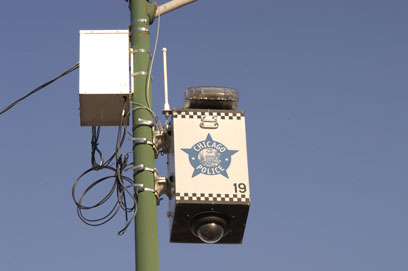
The tatty-looking Howard el station remains an eyesore, but that too is changing. In January 2006, the CTA announced a $56.7 million makeover of the dilapidated el station and retail space on Howard Street. The renovation is scheduled to start in spring 2006 and to be completed by 2009.
Some locals say they are disappointed in the 13-acre $75 million Gateway Shopping Center, at Howard and Clark streets, which in the late 1990s was supposed to provide much-needed retail and be a catalyst for Howard. In early 2006, retailers at the center included Dominick’s, Marshall’s, Bally Total Fitness, Hollywood Video, Footlocker, GNC vitamin store, Sally Beauty, Gamestop, T-Mobile and Dunkin’ Donuts.
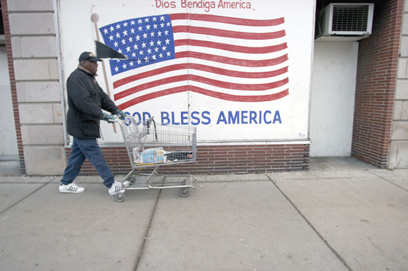
“There are considerable vacancies considering how long it has been up and running,” Abels says.
Overdevelopment fears
Some longtime Rogers Park residents want new shops, but they’re also wary of overdevelopment. Several years ago, the community waged a successful campaign to prevent the development of a marina. Now civic leaders are discussing an extension of the lakefront bike path north of Bryn Mawr Avenue, and some locals don’t like what they’re hearing.
“It would change everything, people would come all the way up,” says hairdresser Lisa Sakellarion. “In summer now the beaches aren’t overcrowded. It’s not like Oak Street Beach, and we kind of like our well-kept secret.”
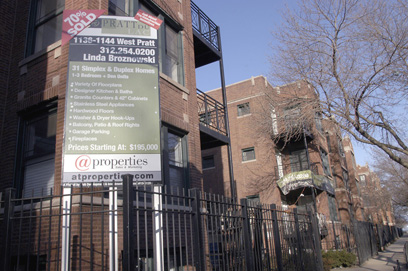
Resident Jeff Winkowski, who has Jewish roots and is part of the local Hare Krishna community, likes his neighborhood’s diversity and the fact that Rogers Park beaches aren’t full of “he-men kicking sand around.”
“I’m not saying this is la-la land or anything like that,” Winkowski says. “It’s just a very civilized neighborhood where people are behaving in the proper manner that human beings should behave in.”
Alpana Singh, who hosts the WTTW program Check Please! and recently bought in Rogers Park, hopes residents won’t be too quick to judge newcomers.
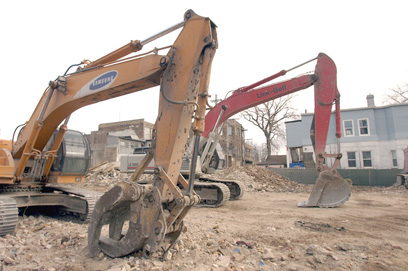
“I’m probably the yuppie they are talking about,” she says, adding that she believes the city needs to find ways to offer more affordable housing for lower-income residents.
“I’m not about coming in here and making a quick buck and then just kind of going, ‘Oh thanks,'” Singh says. “I want to get involved as much as possible. I get this feeling that if you are a Rogers Park resident you should get involved in the area. That’s the spirit of the community.”
